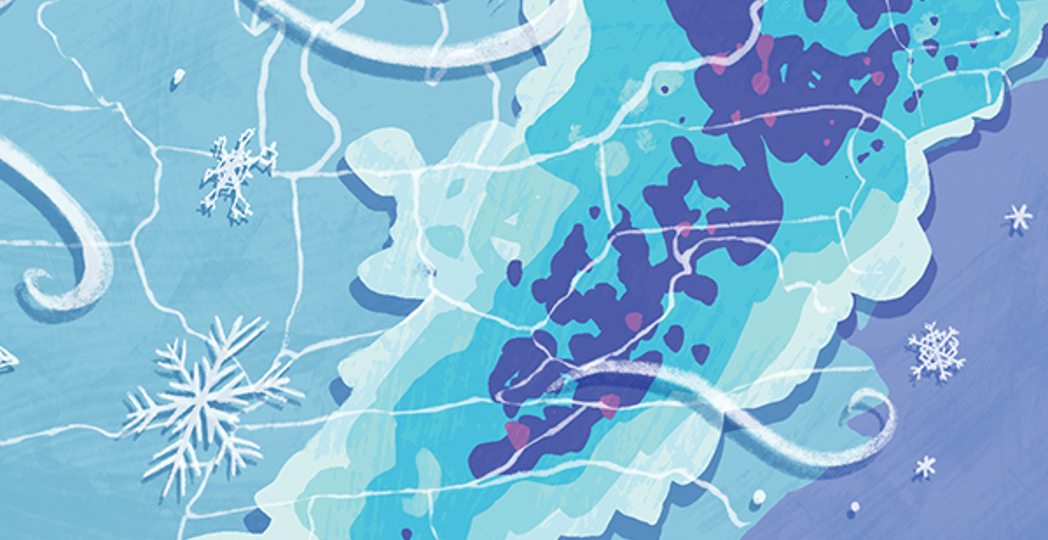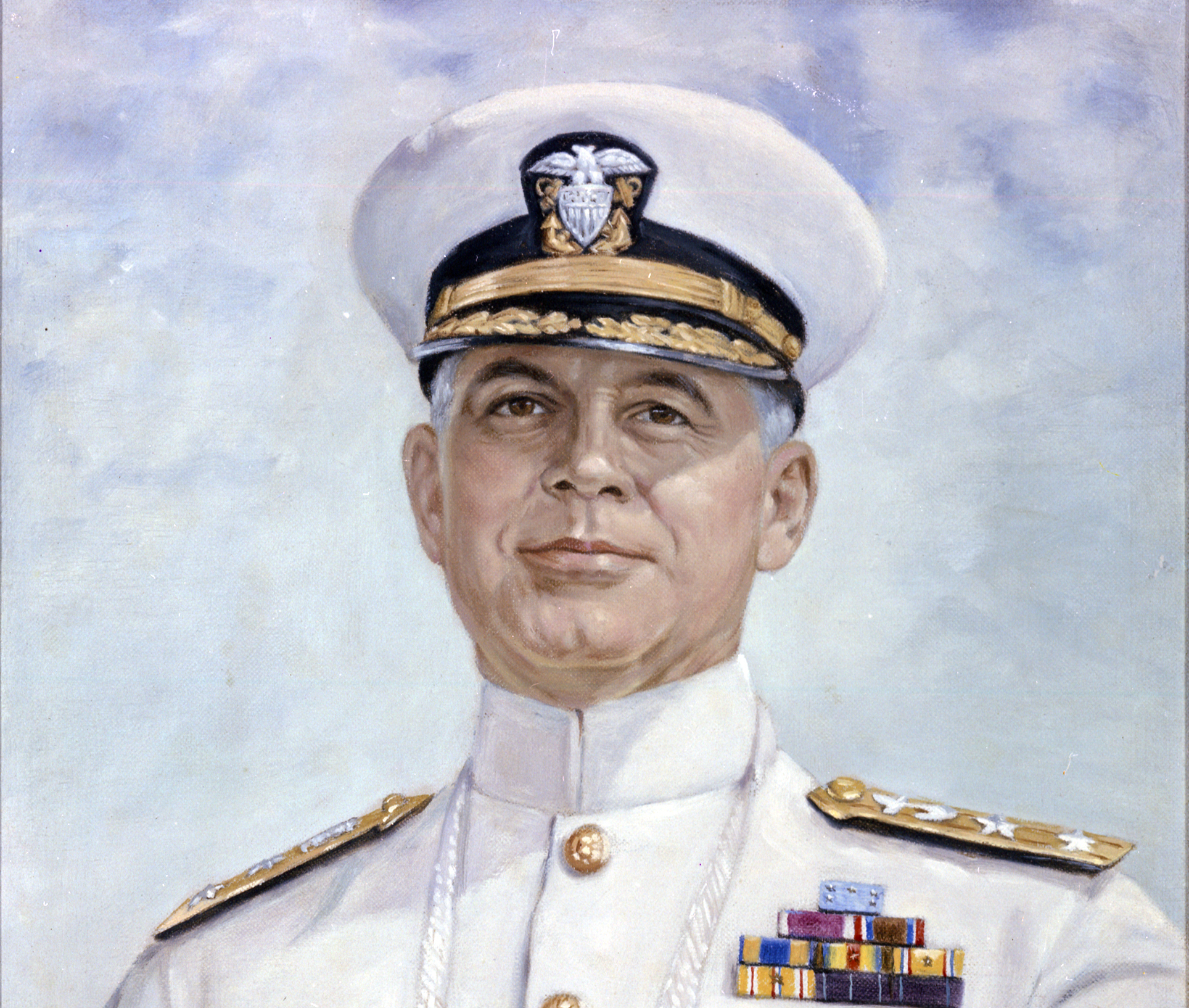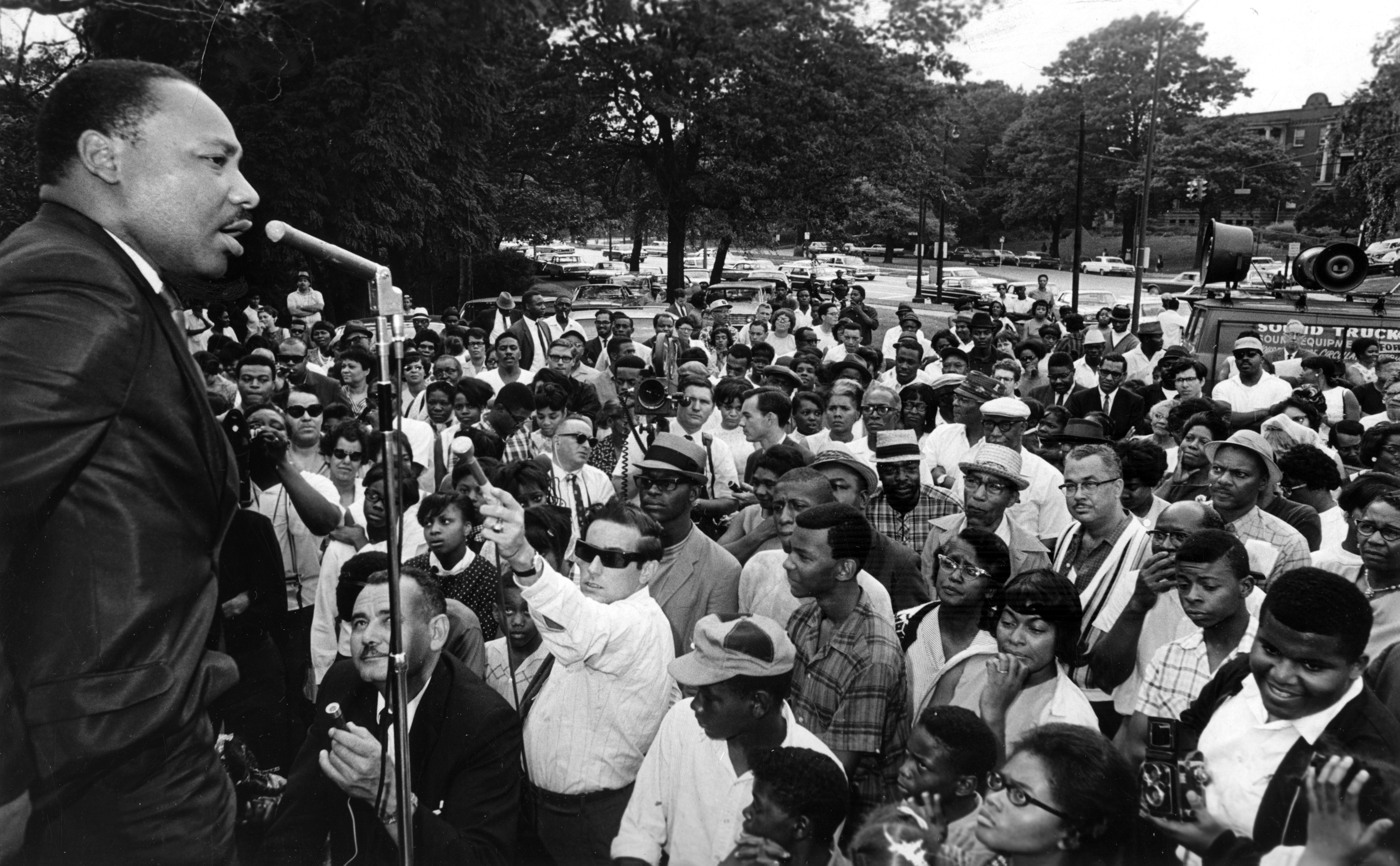1993: The Storm of the Century Hits the Midwest
by Becky Boban | Mar. 10, 2023 | 1:00 PM

Emily Zhang
Scott Lakus had been warned.
Meteorologists had consistent models five days in advance. Right before the Ides of March in 1993, the Storm of the Century slammed nearly half the country’s population. But like Caesar, Scott could not be deterred.
“I was in my 20s, indestructible and going to see my favorite band,” says Scott, an adamant Deadhead, or follower of the Grateful Dead.
“Most people stayed home,” says Karen Lakus, Scott’s future bride, who also had tickets for the show. “Except for Deadheads because they’re not that smart.”
Scott hit the road with a friend in a 1987 Ford Ranger, braving the trek to the Richfield Coliseum from Mentor. After an hour and a half truckin’ 25 mph, they pulled off to a cheap Northfield motel called the Sunset Inn.
At an apartment complex in Rocky River, Dennis Manoloff shoveled snow for his neighbors. The reporter wasn’t thinking about his The Plain Dealer assignment that night. The Cleveland Crunch was supposed to play against the Buffalo Blizzard at Cleveland State University Convocation Center.
“I didn’t think there was any way the game would be played,” says Manoloff, who now occasionally writes for Cleveland Magazine.
Chuck Murr, then-media director of the Cleveland Crunch, knew better. The Crunch’s general manager, Al Miller, was an old-school guy. And when did the weather ever stop a sports game? Murr wouldn’t see his first cancelation until later that decade.
“[We’d be] in a driving rainstorm, lightning and thunder like crazy,” Murr says. “Now, they stop a game if there’s lightning in Nova Scotia.”
“It was one of the storms that lived up to its hype,” says Peter Whiting, a Case Western Reserve University professor of earth, environmental and planetary sciences.
Compared to 2022’s Christmas bomb cyclone, which dropped from a 1-foot snow warning to 4 inches in Cleveland, 1993’s storm made its threat explicit. A dome of cold air rushed from Canada to tango with warm air sweeping from the Gulf of Mexico across Texas. Whiting explains the cold air was bulldozed upwards, priming precipitation. The boundary where the differing pressures met complicated into a thunderous low-pressure system with snow as it moved east and then north.
Feeding off the contrast in temperature, columns of air twisted, creating at least 15 tornados in post-Hurricane Andrew Florida, one of which was tracked for 30 miles. In Ohio, the low pressure was listed as a Category 5, akin to that of a hurricane.
Despite these “three cherries on the slot machine,” as Paul G. Knight, a Pennsylvania State University Weather Communications Group meteorologist, offered The Plain Dealer, Whiting admits to furniture shopping during the storm.
At the motel, Scott called his mom from a payphone. She told him the devastating news: The Grateful Dead show was canceled.
“Drifts of snow were plowing in under the door of the motel,” Scott says.
Ohio’s southern counties broke their Blizzard of 1978 snowfall record with 22 inches in 24 hours. Yet Ohioans managed to find levity. In Castalia, anglers braved the elements to fish at Cold Creek at Millsite Rod and Gun Club. Laurel Telliard of Lakewood loaded a Volkswagen camper with snacks and hot chocolate. She headed to Rocky River Reservation to teach her daughters, Chelsey and Tracey, how to cross-country ski. Frank Jolly and Gabrielle Dugue got engaged, their limousine lodged in a snowbank on the way to the Top of the Town Restaurant.
The Forest City Yacht Club, teeming with cabbage, beans, corned beef and Manhattans for its annual St. Patrick’s Day party, welcomed the stranded couple. Steve Ginal, who managed the bar that night, remembers them stepping in from the cold dressed to the nines.
“That was the most eventful night,” Ginal says, who’s been a member since ’92.
Jolly and Dugue left with an improvised engagement gift, the Crockpot door prize.
Fans arrived at the Cleveland Crunch game. Mike Riley, an Akronite whose kids hoped their mini-ball odds were higher in a diluted crowd, claimed he’d driven in worse. When Manoloff asked Miller why the game hadn’t been canceled, his answer was “because it was scheduled.”
But Jerry May of Youngstown, the Crunch’s announcer, refused to drive up.
Northeast Ohio got scratched by the storm. All roads were closed in Lorain County and officers blockaded the Shoreway, while hours east, Pennsylvania experienced 15-foot snow drifts; Pittsburgh, 23 inches of snow. Twenty-five-foot waves ate at the East Coast.
On Long Island, 18 homes fell into the sea. Birmingham, Alabama, set its current record of 13 inches of snow at 2 degrees. North Carolina’s Mount Mitchell experienced 50 inches. The Dry Tortugas islands reported 109 mph winds. Mount Washington, a volatile area already, reported 144 mph winds. Approximately 1,000 vehicles were snarled between Alabama and Georgia. Children in Florida’s panhandle made snowmen with 6 inches of snow, while boats and dump trucks rescued their southern neighbors from flooded homes. The American Red Cross opened 600 shelters in 20 states.
In total, about 300 people died and $5.5-$11 billion worth of damage incurred. The storm’s immensity, for which it’s known, covered more than 550,000 square miles and generated almost enough water to turn the state of Missouri into a foot-deep puddle.
The storm’s erratic enough to mouth climate change? but impossible to attribute to the phenomenon, Whiting says. “Think of climate change as the probability that you get your slot machine to line up right. You’re changing those odds.”
As the poles decrease in temperature, pressure difference between them also decreases, resulting in decreased wind speeds in atmospheric currents. A particular current that drives the weather from the Midwest to Canada, perpetrating many Cleveland storms, is the jet stream. Whiting explains the jet stream’s undulating coils will slow with less wind, causing warmer warms in the south, and colder colds in the north. Ohio’s air is also predicted to hold more moisture, resulting in four more inches of annual rainfall for Ohio by 2050.
Whiting speculates Ohioans will experience more flash flooding as a result. With more nutrients and soil running into Lake Erie, Whiting cautions algal blooms, plus the dead zones they instigate.
“Ladies and gentlemen, tonight’s attendance, 11,522,” Murr announced, filling in for May. The crowd was aghast. The blizzard had only wrung in 577 attendees.
Murr followed his joke with an earnest gesture; after the game, fans could show their ticket stub at the gate for future game vouchers. The Crunch beat the Blizzard, 19-12.
Stadium staff considered staying the night, but Murr, who loves driving in snow — noting the serenity of new tire tracks — made it back without incident.
Sunday, the Grateful Dead resumed schedule. Scott recalls the performance opened with “Cold, Rain and Snow” and ended with “I Fought The Law,” an allusion to the band’s stance on yesterday’s cancelation.
“Clevelanders are hardy souls,” Murr says over the phone. “The Blizzard of ’78 was much worse, so that kind of prepared some of us. Although, I’m not so hardy anymore. I’m sitting in Florida.”
Trending
-
1
-
2
-
3
-
4
-
5










